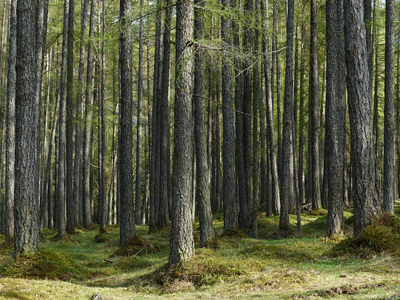Larch Trees and Their Origin
The Larch was brought to Britain in the 17th century from its home on the high mountains of Austria, Germany and Italy, and has adapted well to the cheerless British climate. It now covers acres of land that was once barren moorland.
A few years after Larches are planted the long flexible branches of the young trees meet and form a thicket into which little light or air can enter, and the weeds and heather growing round the tree roots are stifled. Each winter the Larch sheds on the bare ground millions of its tiny needle-leaves which enrich the soil.
After the young trees have grown to a certain height the plantation is thinned out so that those Larch trees that remain may have more room to grow. This also allows sunshine to reach the soil. and soon after a crop of soft, fine grass carpets the ground. In the trunk of the Larch tree there are stores of turpentine which are of considerable value. In Italy, where the Larch trees grow to a great size, small holes are bored through the trunk to the very heart of the tree, and a thin pipe is put in. Then a can is hung on the end of the pipe, and the pure turpentine juice drops steadily into the can. It is then strained, and is sold just as it comes from the tree.
The Larch is always one of the first trees to awaken at the call of Spring. On each flexible twig there appear little brown scaly knobs like small beads, placed either singly or in pairs with a short space between each bead. In a few days these scaly beads burst open, and a tuft of vivid green leaves peeps out. These leaves are soft and flat and slender, very different from the hard needles of the Pine and the harsh swords of the Fir trees, and they grow in tufts, thirty or forty together, rising from the centre of the scaly brown bead.
Larch wood is very valuable, and is used for many purposes. It is very tough, and does not rot in water.

